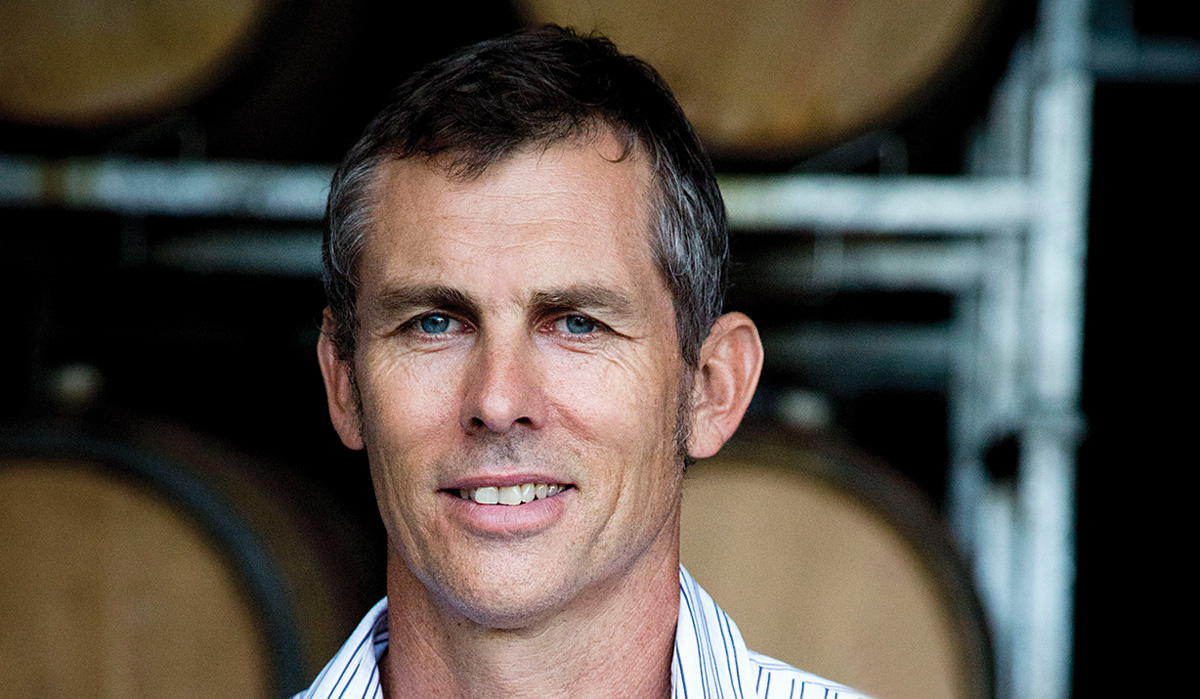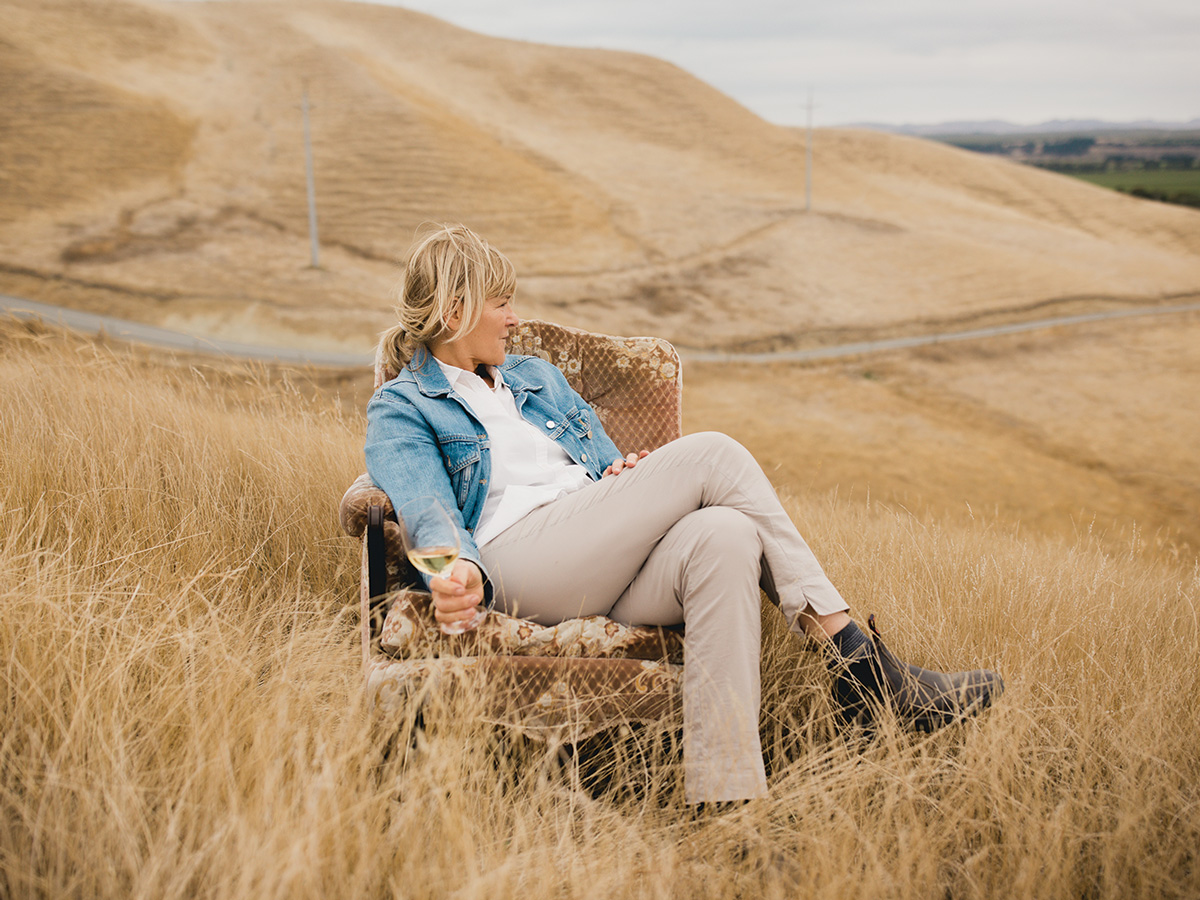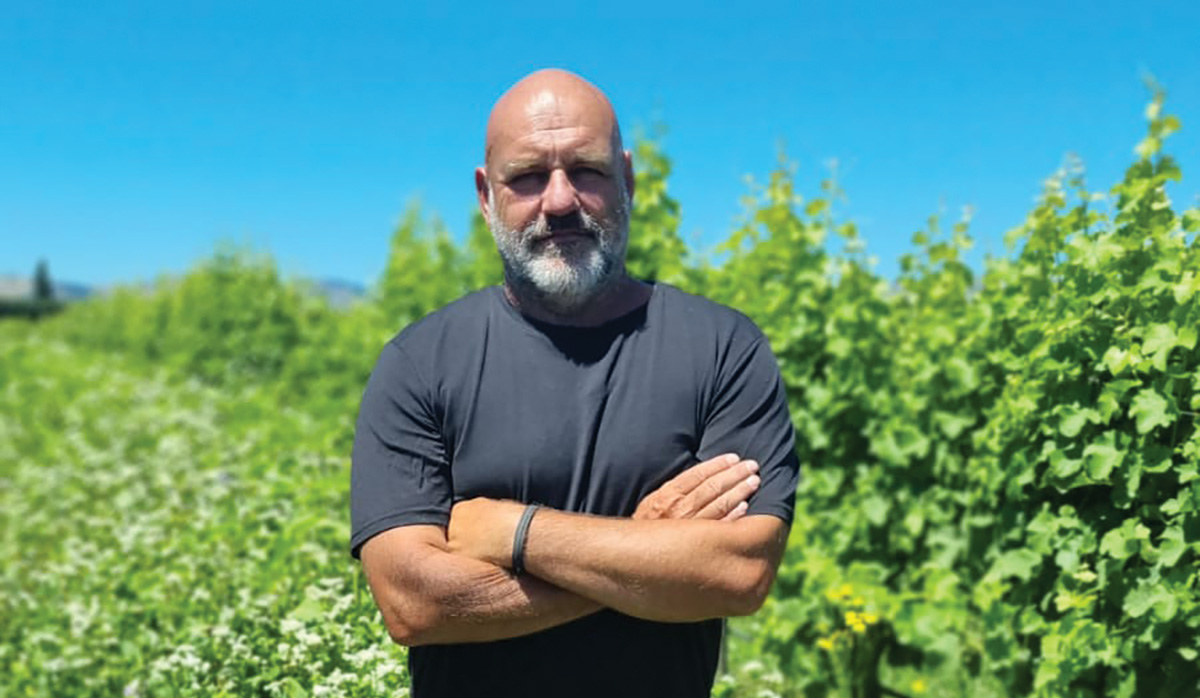A Thousand Gods
I like to think that when Simon Sharpe and Lauren Keenan heard they'd been named The Real Review Rising Star of the Year, they cried out "miladiou!"
The Organic & Biodynamic Winegrowing Conference has been curated for the organically certified, the currently converting, and the curious conventional grower.
With a programme that pours from carbon counting and community connection to mycorrhizae and markets, "it has something for everyone", according to co-chair Nick Pett. "Our goal is someone can walk away and say, 'I want to try that'".
Nick is part of the executive of Organic Winegrowers New Zealand (OWNZ) and Winemaker at Seresin Estate, which was certified for organics in 2001 and biodynamics in 2010. It's a pioneering company and they are constantly looking for ways to do better by the land and the wines, "whether that's through technology or something more rustic", Nick says, explaining the beneficial outcomes of recent hand ploughing trials. Everyone in the sector wants organics to grow and thrive, he adds. "We are more than happy to share our learnings and failings for the betterment of the industry. We want to help develop the future leaders in the industry and show them what is possible."
The influence of organics and biodynamics goes well beyond those who are certified and in the process of conversion, he says, excited to see tendrils of organic philosophy spreading like mycorrhizae, with covr crops, reduced herbicide passes and biodiversity steadily softening the practices of conventional grape growing. "If you drive through Marlborough now and look at the interrow of a standard vineyard, and how permanent swards are maintained, it's not all perfectly groomed and mowed down low," Nick says. "You see people mowing every other row and looking to have some biodiversity." Incorporating "all those little bits" leads to a general improvement, he adds. "People don't realise that what they're doing is what organic producers have been doing for a long time."
His conference co-chair Bart Arnst, who has been deep in organic viticulture for three decades, says the influence is not just in New Zealand. He’s heard organic discussions around the world touching on growing techniques first established here, including planting buckwheat as a deterrent to Light Brown Apple Moth, which comes from research he and Samantha Scarratt, among others, conducted with the late Dr Steve Wratten in the mid-1990s.
Back then there were few people interested in discussing plants to attract beneficial insects or cover crops to grow worm counts. But for the past 15 years Bart has been busy lecturing viticulture students, sourcing organic fruit for eager wine companies, managing client vineyards, and working with his own co-owned label, The Darling. He’s also helped organise the Organic & Biodynamic Winegrowing Conference since the inaugural – and packed out – 2015 event.
The three-day 2023 conference, on in Blenheim from 20-22 June, builds on pillars of Create, Care and Connect, with 25 speakers from New Zealand and abroad. It will cover regenerative organic and biodynamic viticulture, including the likes of biochar, biological inputs, mycorrhizae and rhizobacteria. It will also canvas the international image and value chain of organic New Zealand wines, climate action and carbon counting, and the importance of connection, with stories of whakapapa and indigenous communities. “I think this conference has something for everyone,” says Nick. “From the truly converted – ‘we’ve been practicing for 20 years’ – to guys who are in conversion, to those who want to learn.”
Organic Growth in Our Vineyards
New Zealand organic viticulture is “maturing as a sector”, says BioGro Audit Manager Jared White. “People who are well established in the market and making organic wine are not likely to drop out any time soon,” he explains. “They enjoy what they do, have a market for their product, and there is definitely demand.”
BioGro turned 40 this year, and since 1983 has encouraged the conversion of 235 vineyards to register as certified organic, starting with Millton Estate in Gisborne. Two years ago BioGro released a report showing exponential growth in organically certified vineyards in New Zealand over the past two decades, and an increase of 300% during the past 10 years. As of 2021, 2,418-hectares of New Zealand’s 40,323ha of vineyard were organic (about 6%), with another 432ha in conversion.
But it’s not all an upward trajectory. In 2021 Marlborough accounted for 1,166ha of the organic plantings, which was 48% of the national total, but only 4% of Marlborough’s vineyard land. In the two years since, the percentage has gone down, due to very large conventional plantings outstripping the conversion of organic vineyards.
Of all varieties, Sauvignon Blanc (which accounts for 26,559ha of New Zealand’s vineyard area) is the least likely to be grown organically, with 3% of the national planting, compared to 15% of Pinot Noir and 8% of Chardonnay. So the statistics of Central Otago naturally soar above Marlborough, with the 525ha of organic vineyard in 2021 representing more than a quarter of Central’s plantings.
A lot of New Zealand’s premium producers are organic “and they are almost ambassadors in some way”, Jared says. That’s backed up by Bob Campbell MW, who noted in 2021 that fully or partly organic wineries are more than five times as likely as non-organic wineries to find a place in The Real Review Top 52 list.
Te Whare Ra’s Anna Flowerday says a lot of the growth for organics is in markets where they can command a premium. “To me that’s a winner-winner.” It’s wonderful to see the “rise of organics across New Zealand, she says. “Especially from that quality perspective. If you look at people’s top 20 or top 50 producers, chances are now that half of them are organic.”
Although some big blocks have been withdrawn from certification in Marlborough since the BioGro report, others have come into the tent, including Auntsfield and Hunter’s Wines, while others, such as Babich, have increased their organic vineyard area “because they have tapped into specific markets that work for them”, Jared says.
Babich Wines Chief Executive David Babich says the organic range sets them aside from the crowd. Buyers get served the same brands year after year “and all of a sudden, we’ve been able to say, ‘we have organic wines and it’s vegan as well’. So we can have the conversation.”
 |
|---|
|
David Babich |
It’s a point of difference and “buyers have been very receptive”, he says, noting that in the United Kingdom that support is key. “If it has momentum then they will look to buy more, and it will be a growing category.”
Organic Growth in the Market
In the Autumn 2023 Organic Matters magazine, Erica Crawford, a marketing representative on the OWNZ executive committee and founder of Loveblock Wines, says organic wine is growing globally, “albeit off a smaller base”. It is still niche, but sales are predicted to grow by 10% year-on-year to 2030 in the biggest organic wine markets, the United Kingdom, France and Germany, while sales in the general wine category are static or declining. “These numbers are reflected in the US as well,” Erica says.
 |
|---|
|
Erica Crawford at Loveblock. |
Loveblock had its first organic blocks in 2008, and Erica watched the global market with interest, seeing organics “pop up” in specialty stores and major chains alike. “It has taken a few years to get momentum,” she says in Organic Matters. “I believe people are now more open and aware - not only of what is in a wine, but also how it is grown and how a company conducts itself.”
New Zealand wine maven Melanie Brown, founder of The Laundry and Specialist Cellars in London, says there is “most certainly” a burgeoning interest in New Zealand organic wine. “Consumers are definitely becoming more astute with the philosophy behind the wine they are purchasing.” She puts increased attention down to the integrity of organic wines, and to consumers being “much more clued up” about the philosophy and production behind each bottle, leading to greater interest in vegan wines as well. “The bottom line is consumers are far more aware of their environmental impact and so this is definitely a buying consideration when it comes to their desired wines of choice.” The cost-of-living crisis means spending on New Zealand wine is down as a whole for her operations, but while organic wines are slightly more expensive, the tendency is increasingly for people to buy one bottle that has quality and “meaning” rather than two that do not, Melanie says.
Alexander Michas is President and Chief Operating Officer at VINTUS in the United States, which distributes organic wines from Marlborough’s Dog Point Vineyards as part of a portfolio of family-owned estates around the world. About a quarter of VINTUS’s producers have, or are in process of gaining, organic certification, with an acceleration over the past few years, Alexander says. “It wouldn’t surprise me if nearly all of our producers are farming organically in a decade.” That’s a clear shift from 10 years ago, when the organic section of a store was “small and dusty, with wines for the most part unknown, and certainly not quality leaders”, and has come from producers, the trade, and consumers, “in several self-reinforcing ways,” he says. “Quality producers want to make higher quality wines, and that starts without exception with better vineyard management. Organic farming is certainly one way to raise the level and care in your vineyard.” They also want to be a positive influence on their environment, “in part in response to consumers”, he says. “We also see that buyers work for companies that, whether big or small, can have organic farming or production as either a requirement, or view it as a strong asset; it’s an ethical choice they are making.” Meanwhile, consumers are paying more attention to what they put in their bodies, “and organic has a positive rather than fringe connotation”, he says.
A hard row to hoe
Despite good signs on the horizon, organics isn’t easy, says David Babich, explaining that some of their organic fruit is diverted to non-organic wines, because they have yet to find sufficient market. Sales of the company’s organic ranges grew 242% during the past five years, and 50% in the past year alone, but that’s off a relatively low base and has required a lot of focus, he says.
Babich Wines' organic journey began in late 2005, in a 32-hectare horse paddock on the edge of the Waihopai River. Organics was attracting some attention at the time and “the only way for us to grow our understanding of it was to do it”, David says. The process at Headwaters vineyard was “quite a learning curve”, including adjusting to lower yields and higher vineyard expenses. “It would be very hard to do this commercially if you did it and tried to fit into a commercial band of New Zealand wines.”
 |
|---|
|
Bart Arnst |
Babich’s third organic vineyard is now on its way to certification, building on the experiences at Headwaters and The Willows. “There’s still plenty for us to learn,” David says. And despite the challenges, he’s committed to their organic range, which serves the environmental aspirations of the company, while also setting it aside from the crowd. “Commercially, we feel organic wine is strongly differentiating itself both in the New Zealand and international wine industry. As a family winery, we’re really committed to organic wine production and its growth.”
When Bordeaux-based Edmond de Rothschild Heritage Wines bought Akarua in Bannockburn late last year, its Chief Executive Ariane de Rothschild said plans to convert the Pinot Noir vineyard to organics represented a unique opportunity to move into “one of the fastest growing categories”. The company is tapping into that with Sauvignon Blanc as well, with Rimapere Vineyard in Marlborough due to reach organic certification next year.
“We put our all into enhancing the Rimapere viticulture system to organic and regenerative with the results being very humbling,” says Viticulturist Kurt Robinson. “The Akarua vineyard has an unprecedent amount of unlocked potential, with a clear view on what we want to achieve from now into the future.” Organics provides “a symbiotic flow from vineyard to winery and the end consumer”, Kurt says. “An epic journey.”
Organic & Biodynamic Winegrowing Conference
20-22 June organicwineconference.com
The large 2025 harvest will exacerbate the wine industry's "lingering" supply from recent vintages, New Zealand Winegrowers Chief Executive Philip…
If you find a new consumer in a developed wine market, you are taking them from someone else, says Blank…
OPINION: Sauvignon Blanc was famously introduced to New Zealand by Ross Spence of Matua Valley, and then serendipitously planted in…